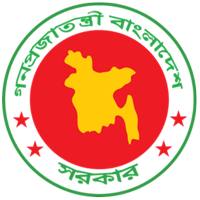Keeping the Promise Intact: Ensuring Every Child Gets Vaccinated Despite Global Funding Gaps
When a child receives their first dose of the DTP vaccine — protecting them from diphtheria, tetanus, and pertussis — it’s more than just a shot; it’s a promise of a healthier future. But in 2025, that promise is at risk for millions of children as global aid cuts threaten essential immunisation programs across the world.
In 2024 alone, the global humanitarian funding gap reached $25 billion, leaving many health programs struggling to maintain operations. Thousands of international aid grants were terminated in early 2025, disrupting crucial health services — including those that deliver lifesaving vaccines to children in some of the world’s most fragile regions.
Vaccination is one of the simplest and most cost-effective ways to save lives. Yet, for millions of children living in conflict or disaster-affected areas, reaching a vaccination center is no longer guaranteed. Many families depend on aid-supported facilities for vaccines like BCG, Pentavalent, OPV, and PCV, which protect against deadly but preventable diseases.
The International Rescue Committee (IRC), a long-standing humanitarian organisation, has reported that around 300 of its health facilities have closed or are at risk due to global funding cuts. These centers collectively provide over 4.3 million services for communicable diseases every year, with nearly 1.7 million services delivered to children under five.
Despite financial challenges, the IRC has continued its mission to reach children in the hardest-to-access communities. In 2024 alone, its teams ensured that over 700,000 children under one year old received their third dose of the DTP vaccine, completing their essential protection schedule.
To sustain and expand immunisation, the IRC launched the Reaching Every Child in Humanitarian Settings (REACH) project in partnership with Gavi, the Vaccine Alliance. The initiative aims to ensure that children in conflict and disaster zones receive the full schedule of national vaccines — regardless of where they live.
Using innovative methods such as mobile clinics, local health teams, and digital mapping tools, the REACH project has already enabled health workers to deliver over 13 million vaccine doses across the Horn of Africa, recently expanding into Chad and Nigeria.
The IRC’s success lies in its community-centered approach. In 2024, the organisation supported 15,800 community health workers who played a key role in delivering vaccines and building trust within local populations. These health workers, often women from the same communities they serve, travel through difficult terrain — even flooded areas — to ensure that no child is left unvaccinated.
“Every vaccine given is a step toward stability,” said one IRC health worker. “When a child is protected, an entire community becomes stronger.”
Experts warn that cutting immunisation funding could reverse years of progress against preventable diseases. Yet, the IRC’s determination offers hope. By combining humanitarian expertise with innovative delivery systems, it continues to demonstrate that even in the toughest circumstances, reaching zero-dose (ZD) and under-immunised (UI) children is possible.
As Bangladesh and other South Asian countries advance toward immunisation equity, the IRC’s work serves as a reminder: global cooperation and sustained investment are key to ensuring that every child, everywhere, grows up healthy and protected.
References:
How are aid cuts impacting child vaccines? The IRC’s critical response [Internet]. How are aid cuts impacting child vaccines? The IRC’s critical response. The IRC; 2025 [cited 2025 Oct 19]. Available from: https://www.rescue.org/article/how-are-aid-cuts-impacting-child-vaccines-ircs-critical-response









